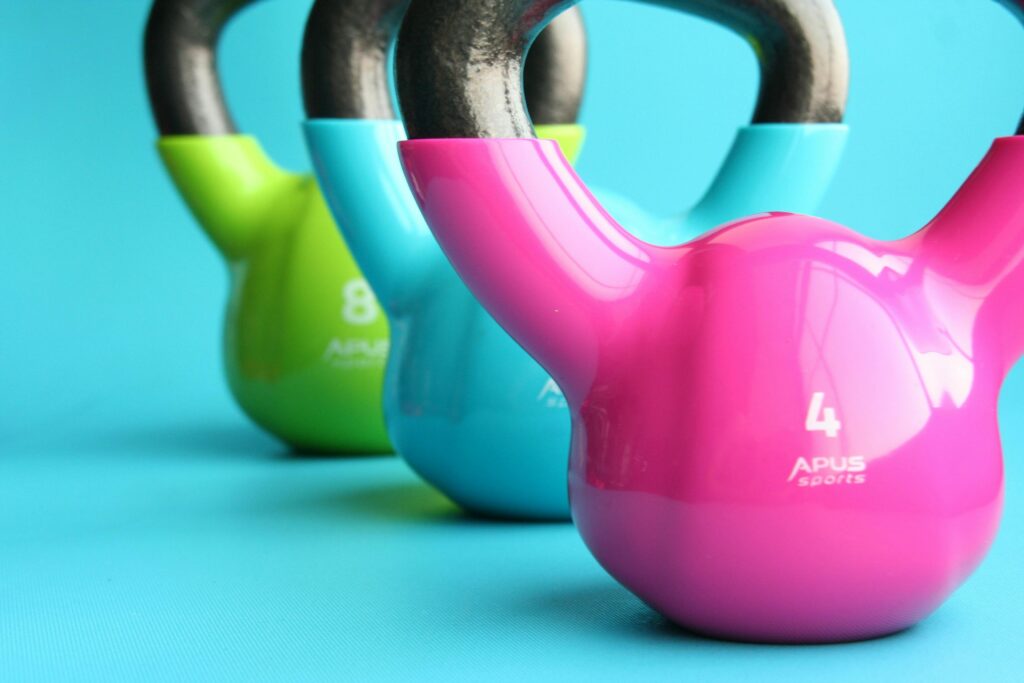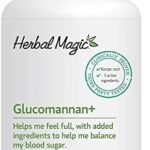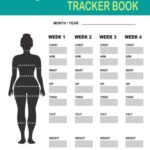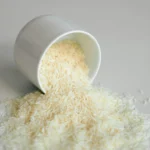Are you tired of the same old workout routine? Wondering how to find physical activities that are both suitable and enjoyable for you? Look no further! In this article, we will explore the world of fitness and help you discover the perfect fit for your individual preferences and interests. Whether you’re a seasoned athlete or new to the fitness scene, we’ve got you covered. Get ready to embark on a journey of self-discovery and find the ultimate physical activities that will keep you motivated and excited to get moving.
In This Article
ToggleBenefits of Physical Activity
Improves physical health
Engaging in regular physical activity brings numerous benefits for your physical health. It helps to strengthen your muscles, improve cardiovascular fitness, and enhance overall endurance. Regular exercise also helps to maintain a healthy weight, reduce the risk of chronic diseases such as heart disease and diabetes, and increase bone density. By incorporating physical activity into your routine, you can improve your overall physical well-being and enjoy a healthier, more active lifestyle.
Boosts mental well-being
Physical activity does not only benefit your body but also has a positive impact on your mental well-being. Exercise has been proven to promote the release of endorphins, the feel-good hormones, which can elevate your mood and reduce feelings of stress, anxiety, and depression. Regular physical activity can also enhance cognitive function, improve memory and focus, and boost self-esteem. Engaging in physical activity is a great way to take care of your mental health and improve your overall well-being.
Promotes better sleep
If you struggle with getting a good night’s sleep, physical activity can help. Regular exercise has been shown to improve the quality and duration of sleep. Engaging in physical activity during the day helps to increase your body’s need for restorative sleep, making it easier to fall asleep and stay asleep throughout the night. Just be cautious about exercising too close to bedtime, as the increase in endorphins and heart rate may make it difficult to unwind before bed.
Enhances overall quality of life
By incorporating physical activity into your daily routine, you can significantly enhance your overall quality of life. Regular exercise can improve your energy levels, increase your productivity, and boost your self-confidence. It also provides a sense of accomplishment and fulfillment, as you set and achieve personal fitness goals. Engaging in physical activity allows you to enjoy more activities and experiences, and improves your overall ability to participate in daily life with vigor and vitality.
Identifying Personal Interests and Goals
Consider hobbies and interests
When exploring physical activities, it is important to consider your hobbies and interests. What activities do you enjoy doing in your free time? Do you have any hobbies that involve movement or sports? By selecting activities that align with your interests, you are more likely to stay engaged and motivated. For example, if you enjoy dancing, you may consider taking up a dance class or joining a dance fitness program.
Set specific goals
Setting specific goals can help you stay focused and motivated on your fitness journey. Consider what you want to achieve through physical activity. It could be anything from improving cardiovascular endurance, increasing muscle strength, or losing weight. By setting specific goals, you can tailor your physical activities to align with these objectives. This will give you a sense of purpose and make your fitness journey more rewarding.
Evaluate current fitness level
Before diving into a new fitness routine, it is essential to evaluate your current fitness level. This will help you determine your starting point and choose appropriate activities. You can assess your fitness level by considering factors such as cardiovascular endurance, muscular strength and flexibility, and body composition. This self-assessment will help you understand your strengths and areas for improvement, allowing you to select activities that cater to your current capabilities.
Determine preferred exercise environment
Consider your personal preferences when it comes to the exercise environment. Do you enjoy working out in a gym setting with access to various equipment? Or do you prefer being outdoors, surrounded by nature? Identifying your preferred exercise environment will help you choose activities that you truly enjoy and feel comfortable in. Whether it’s a local park, a fitness studio, or the comfort of your own home, finding the right exercise environment will enhance your overall experience.

This image is property of images.pexels.com.
Exploring Different Types of Physical Activities
Aerobic exercises
Aerobic exercises, also known as cardiovascular exercises, are activities that increase your heart rate and breathing. These exercises promote cardiovascular health, help to burn calories, and improve overall endurance. Examples of aerobic exercises include brisk walking, jogging, cycling, swimming, and dancing.
Strength training
Strength training involves exercises that target your muscles, improving muscle strength and endurance. This type of physical activity involves resistance, whether through free weights, weight machines, or bodyweight exercises. Strength training is essential for maintaining muscle mass, increasing bone density, and improving overall functional fitness. It can include exercises such as weightlifting, bodyweight exercises, or using resistance bands.
Flexibility and balance activities
Flexibility and balance activities are crucial for maintaining joint mobility, preventing injuries, and improving posture. These activities focus on stretching muscles and improving range of motion. Examples include yoga, Pilates, tai chi, and stretching exercises. Incorporating flexibility and balance activities into your routine can enhance overall body awareness, reduce muscle tension, and increase stability and coordination.
Outdoor activities
Outdoor activities provide an opportunity to connect with nature while getting physically active. Activities such as hiking, biking, running, or playing sports outdoors not only offer physical benefits but also allow for fresh air and a change of scenery. Outdoor activities provide a sense of adventure and can make your exercise routine more enjoyable.
Group fitness classes
Group fitness classes offer a social and motivational aspect to physical activity. These classes are led by instructors who guide you through various exercises and routines. From high-energy workouts like Zumba and kickboxing to mind-body practices like yoga and Pilates, there are group fitness classes available for every interest and fitness level. Joining a group fitness class can provide a sense of community and accountability.
Sports and recreational activities
Engaging in sports and recreational activities can be a great way to stay active while having fun. Sports like basketball, soccer, tennis, or swimming not only provide physical benefits but also present opportunities for friendly competition and camaraderie. Participating in recreational activities like bowling, golfing, or dancing can also be enjoyable ways to get moving and improve your fitness.
Factors to Consider
Time availability
Consider your schedule and the time you are willing to dedicate to physical activity. Look for activities that fit into your daily routine and allow for consistency. It is important to find a balance that works for you, whether it means setting aside specific times for exercise or incorporating physical activity into your everyday tasks.
Physical limitations
Be aware of any physical limitations or health conditions you may have that could affect your choice of activities. If you have any concerns, consult with a healthcare provider or a fitness professional to ensure you select activities that are safe and appropriate for your individual circumstances. Adaptations and modifications can often be made to accommodate different abilities and needs.
Budget
Consider your budget when selecting physical activities. Some activities may require membership fees, equipment purchases, or class fees. Explore affordable options like walking or running outdoors, bodyweight exercises at home, or utilizing free resources available online. It is possible to engage in physical activity without breaking the bank.
Accessibility of facilities or equipment
Consider the accessibility of facilities or equipment required for specific activities. Determine if there are nearby gyms, parks, or sports facilities that offer the activities you are interested in. If you prefer at-home workouts, consider the space and equipment you may need, such as dumbbells, resistance bands, or workout videos.
Level of social interaction desired
Think about the level of social interaction you desire in your physical activities. Some people thrive in group settings and enjoy the camaraderie that comes with it. Others may prefer solitary activities that allow for self-reflection and introspection. Consider whether you enjoy the company of others during exercise or if you prefer individual activities.
Preference for individual or team activities
Consider whether you prefer individual activities or thrive in team sports or group settings. Some individuals enjoy the accountability and camaraderie that comes with team sports, while others prefer the independence and self-discipline of individual activities. Reflecting on your preferences will help you select activities that align with your personal style.

This image is property of images.pexels.com.
Consulting with Professionals
Seek advice from a healthcare provider
Before starting or making significant changes to your exercise routine, it is recommended to consult with a healthcare provider, especially if you have any underlying health conditions or concerns. They can provide guidance on the types of activities that are safe and appropriate for you, considering your specific medical history and needs.
Consult a personal trainer or fitness instructor
If you are new to exercise or unsure where to start, consider consulting with a certified personal trainer or fitness instructor. They can assess your current fitness level, discuss your goals, and design a personalized exercise program tailored to your specific needs. A professional can also ensure that you are using correct form and techniques to prevent injuries and maximize the effectiveness of your workouts.
Join a sports club or organization
To further enhance your physical activity experience, consider joining a sports club or organization. These groups provide opportunities to participate in team sports or organized activities, connect with like-minded individuals, and receive guidance from experienced coaches or instructors. Being part of a community can make your physical activity journey more enjoyable and rewarding.
Participate in fitness assessments or consultations
Many fitness facilities offer fitness assessments or consultations as part of their services. These assessments can help you understand your current fitness level, identify areas for improvement, and set realistic goals. Fitness professionals can guide you through the process, providing recommendations and insights to help you make informed decisions about your physical activity choices.
Trial and Error Approach
Experiment with different activities
To find the perfect physical activities for you, be open to experimenting with different options. Try out different exercises, sports, or classes to see what you enjoy the most. Not every activity will be a perfect fit, but through trial and error, you can discover activities that bring you joy and fulfillment.
Attend trial classes or sessions
Many fitness studios and gyms offer trial classes or sessions for newcomers. Take advantage of these opportunities to experience different types of activities without committing long-term. Participating in trial classes can give you a better understanding of what you enjoy and help you decide which activities to pursue further.
Reflect on enjoyment and fulfillment
After trying out various activities, take the time to reflect on your experience. Consider the activities that brought you the most enjoyment and fulfillment. Reflect on how you felt physically and mentally during and after each activity. This reflection will guide you in selecting activities that resonate with you on a deeper level.
Consider challenges and ease of adherence
Take note of the challenges and ease of adherence you encountered with different activities. Pay attention to factors such as level of difficulty, time commitment, and convenience. Activities that are too challenging or time-consuming may lead to frustration or lack of consistency. Find a balance between activities that challenge you and activities that you can easily incorporate into your lifestyle.

This image is property of images.pexels.com.
Building a Balanced Routine
Incorporate different types of activities
A balanced routine should include a variety of physical activities that target different aspects of fitness. Aim to incorporate aerobic exercises, strength training, flexibility and balance activities, and outdoor or recreational activities into your routine. This variety will ensure that you are working different muscle groups, improving overall fitness, and preventing boredom.
Allocate time for warm-up and cool-down
Don’t forget to allocate time for warm-up and cool-down before and after each physical activity. Warm-up exercises, such as light cardio or dynamic stretching, prepare your body for the upcoming activity, increase blood flow, and help prevent injuries. Cool-down exercises, such as static stretching or gentle movements, aid in muscle recovery and reduce post-exercise soreness.
Schedule rest and recovery days
Rest and recovery are crucial for allowing your body to heal and adapt to the physical demands of exercise. Schedule regular rest days in your routine to give your muscles time to recover and rebuild. Overtraining can lead to injuries and burnout, so listen to your body and incorporate rest days as needed.
Gradually increase intensity and duration
As your fitness level improves, gradually increase the intensity and duration of your activities. This progressive overload helps stimulate further improvements in strength, endurance, and overall fitness. Start by challenging yourself with small increments and listen to your body’s feedback. Push yourself to your limits, but also be mindful of not overexerting yourself too quickly.
Finding Motivation and Accountability
Set short-term and long-term goals
Setting both short-term and long-term goals can help you stay motivated and focused on your physical activity journey. Short-term goals can be achieved within weeks or months, such as running a 5K or increasing the number of push-ups you can do. Long-term goals can be larger milestones that may take months or years to achieve, such as completing a marathon or reaching a certain level of strength. Having goals in place will keep you motivated and provide a sense of accomplishment when you achieve them.
Find a workout buddy or join a support group
Exercising with a friend or finding a workout buddy can provide additional motivation and accountability. When you have someone to share your fitness journey with, you can encourage and support each other on days when motivation may be lacking. Joining a support group or fitness community can also provide a sense of camaraderie and inspiration.
Track progress and celebrate achievements
Keep track of your progress to stay motivated and see how far you have come. Whether it is through a fitness app, a journal, or a simple spreadsheet, record your workouts, milestones, and achievements. Celebrate even the smallest victories and acknowledge your hard work. Seeing tangible progress can validate your efforts and inspire you to continue pushing forward.
Reward yourself for consistency
Rewarding yourself for consistency can help reinforce positive habits and make your fitness journey enjoyable. Set up small rewards for yourself, such as treating yourself to a massage or buying new workout gear when you achieve a certain milestone or consistently stick to your exercise routine for a set period. Choose rewards that align with your personal preferences and serve as motivating incentives.

Considering Lifestyle and Practicality
Select activities compatible with daily routine
When choosing physical activities, consider how they fit into your daily routine. Opt for activities that are feasible given your work schedule, family commitments, or other responsibilities. By selecting activities that are compatible with your lifestyle, you are more likely to incorporate them consistently into your daily routine.
Choose options that can be easily integrated
Look for physical activities that can be easily integrated into your daily life. This could mean walking or biking to work instead of driving, taking the stairs instead of the elevator, or incorporating short exercise breaks throughout your workday. By finding opportunities to move and be active in your day-to-day life, you can enhance your overall fitness without requiring large blocks of dedicated exercise time.
Consider proximity to home or workplace
The proximity of the activity to your home or workplace can greatly impact your ability to integrate it into your routine. Consider the distance and travel time required to engage in specific activities. Choosing activities that are close to your home or workplace reduces the barriers to participation and makes it more likely that you will follow through with your plans.
Factor in equipment or facility requirements
Some physical activities may require specific equipment or access to facilities. Consider the practicality and availability of these resources. If you prefer activities that require minimal equipment, consider options such as bodyweight exercises, walking, or running. If you do require equipment or facilities, ensure that they are easily accessible and fit within your budget and schedule.
Keeping it Fun and Enjoyable
Engage in activities that align with interests
To maintain long-term adherence to physical activity, it is essential to engage in activities that align with your interests. Choose activities that excite you and bring you joy. If you love dancing, explore dance classes or dance fitness programs. If you enjoy nature, opt for outdoor activities like hiking or kayaking. Finding activities that you genuinely enjoy will make exercising feel less like a chore and more like a fun and fulfilling experience.
Vary workouts to avoid monotony
Variety is key to keeping your workouts fresh and exciting. Avoid falling into a monotonous routine by incorporating different activities into your schedule. Switch between aerobic exercises, strength training, and flexibility activities throughout the week. Explore new classes or try different outdoor activities to keep your workouts interesting and prevent boredom.
Listen to music or podcasts while exercising
Listening to music or podcasts while exercising can be an excellent way to make your workouts more enjoyable. Choose upbeat, motivating music or podcasts that you find interesting to enhance your exercise experience. Music can provide a rhythm and boost your mood, while podcasts can keep your mind engaged and make the time fly by. Pairing your favorite tunes or podcasts with physical activity can elevate your experience and make it more enjoyable.
Try new activities or challenges periodically
To keep the excitement alive, periodically try new activities or challenges. Stepping outside of your comfort zone and exploring new physical pursuits can bring a sense of adventure and novelty to your fitness routine. Sign up for a new dance style or try a challenge event like a mud run or obstacle course. Adding new activities or challenges to your routine will keep things fresh and prevent stagnation.
Finding suitable and enjoyable physical activities is a personal process that requires self-reflection, experimentation, and a willingness to explore. By considering your interests, goals, and personal preferences, you can discover physical activities that not only benefit your health but also bring joy and fulfillment to your life. Remember, the key is to find activities that you truly enjoy, making physical activity a sustainable and enjoyable part of your lifestyle. So, get out there, try different activities, and embark on a journey of self-discovery and improved well-being through physical activity.
Related posts:
 Stay Fit and Stylish in the Gotoly Women’s Sauna Sweat Jacket – Perfect for Workouts and Waist Training
Stay Fit and Stylish in the Gotoly Women’s Sauna Sweat Jacket – Perfect for Workouts and Waist Training
 Feel Fuller Longer with Herbal Magic Glucomannan+ Fibre Supplement: Non-Stimulant, Enhanced with Chromium and Gymnema, Suitable for Both Women and Men, Non-GMO, 100% Vegetable Capsules
Feel Fuller Longer with Herbal Magic Glucomannan+ Fibre Supplement: Non-Stimulant, Enhanced with Chromium and Gymnema, Suitable for Both Women and Men, Non-GMO, 100% Vegetable Capsules
 Body Measurement Journal for Women: A Comprehensive Tracker for Weight Loss and Fitness Goals – 110 Pages, 8.5″ X 11″ InchEmptyEntries, Weight Loss Progress Diary, Exercise Log, and Meal Planner – Perfect for Girls and Women
Body Measurement Journal for Women: A Comprehensive Tracker for Weight Loss and Fitness Goals – 110 Pages, 8.5″ X 11″ InchEmptyEntries, Weight Loss Progress Diary, Exercise Log, and Meal Planner – Perfect for Girls and Women
 Unisex Handmade Health Bracelet with Magnetic Hematite for Weight Loss – Perfect for Men and Women
Unisex Handmade Health Bracelet with Magnetic Hematite for Weight Loss – Perfect for Men and Women
 Menopause Relief Jewelry Set for Women: Lymphatic Drainage Bracelet, Arthritis Pain Bracelet, and Rhinestone Link Bracelet – Perfect Gifts for Mom and Friend
Menopause Relief Jewelry Set for Women: Lymphatic Drainage Bracelet, Arthritis Pain Bracelet, and Rhinestone Link Bracelet – Perfect Gifts for Mom and Friend
 Ultimate Weight Loss Tracker: 10-Week Meal and Exercise Planner with Food and Beverage Diary, Notes, To-Do Lists – 155 Pages, 7in x 10in – Perfect Bound
Ultimate Weight Loss Tracker: 10-Week Meal and Exercise Planner with Food and Beverage Diary, Notes, To-Do Lists – 155 Pages, 7in x 10in – Perfect Bound











No comment yet, add your voice below!